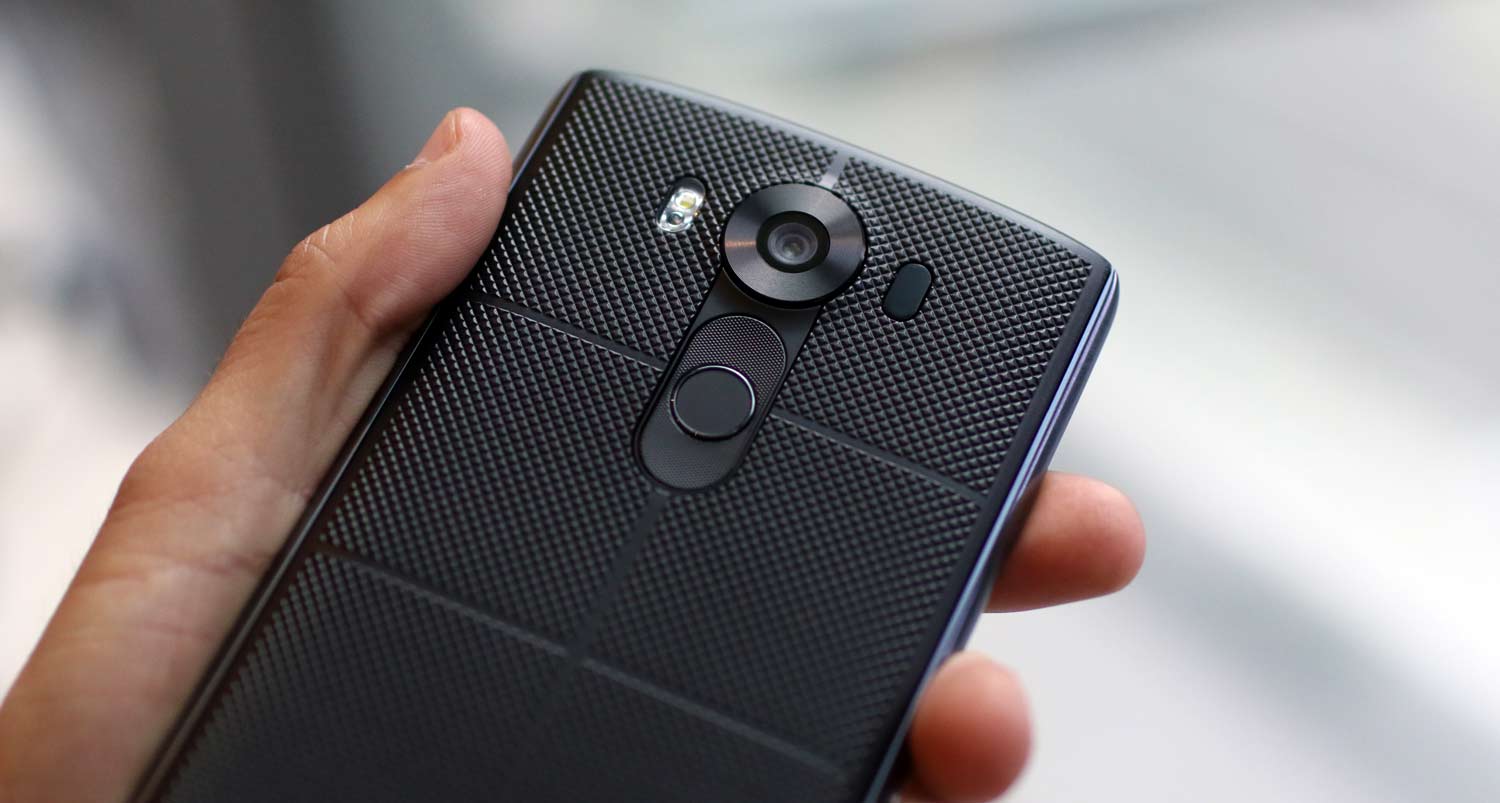LG V10 Hands-on: Seriously Tough Smartphone with Two Screens
The LG V10 hopes to woo shoppers with its always-on second screen, dual selfie cameras and very durable body.
You’ve seen a second screen on the side, but how about on top? Coming to AT&T, Verizon and T-Mobile the LG V10 (price TBD) has an always-on display above its 5.7-inch panel for easy access to info and shortcuts. It even works when the main screen is off. Trying to woo shoppers away from the iPhone 6s Plus and Galaxy S6 Edge Plus, the LG V10 is also built very tough, complete with a stainless steel frame and silicone back, and it comes with two front-facing cameras for getting multiple selfie angles into a single shot.
I spent some hands-on tome with the V10, and found its durable design and video recording features compelling. The always-on display seems more valuable when the display is on versus off.

The first thing you notice about the V10 is its Dura Skin back, which almost looks like someone flattened a tire and wrapped it around this phone. This silicone treatment looks quite durable, as does the 316L stainless steel frame — the same used by Omega for its watches. It has a great grip; there's no way you're dropping this phone, but if you do you should be covered.

LG also includes two layers of Gorilla Glass 4 to protect the front of the device. LG says it dropped the phone from 48 inches repeatedly to test for shock resistance. The back of the V10 has a fingerprint reader built in to the power button, flanked by the volume controls.
The most unique thing about the V10 is its secondary display, which takes up 0.2 inches and has a resolution of 1040 x 160. This screen shows the time, battery life and weather when the main screen is off; when you swipe on it from left to right, you’ll see shortcuts for things like the flashlight and camera.
When the main screen is on, the secondary display can show app shortcuts, your favorite contacts, music controls and other goodies you don’t want hogging up the 5.7-inch quad HD+ panel. Samsung includes an Edge display on its Galaxy S6 Edge and S6 Edge Plus, but it’s limited to app shortcuts and contacts when the main screen is on.

MORE: Best Smartphones - Top-Rated Phones on the Market
Sign up to get the BEST of Tom's Guide direct to your inbox.
Get instant access to breaking news, the hottest reviews, great deals and helpful tips.
Key specs of the V10 include a Snapdragon 808 processor, 4GB of RAM and 64GB of storage, which is expandable via microSD. The handset also packs a 3000 mAH battery.
Those who love to take selfies and group selfies (or groufies) will appreciate the dual 5-megapixel cameras on the V10. A unique multi-mode view lets you compose a shot that shoots you and your friends at both 120 degrees and 80 degrees, throwing in an image from the back 16-MP camera for good measure. Various layouts are available. Basically, LG hopes you won't need a selfie stick with this phone.

The V10 also places a heavy emphasis on video recording, which is part of the reason why this phone comes with 64GB of storage standard. There’s a manual video mode that lets you tweak everything from white balance and ISO to exposure. You can even control the direction of the sound (thanks to three microphones) to focus on your subject.
In terms of image quality, the V10 snaps photos fast, and images looked clear, but the handset had trouble capturing a very bright LG sign outside a window.
LG also includes a Snap Movie mode that automatically creates 15-second highlight reels of longer videos, so you don’t have to worry about editing. When it’s time to share your footage, the V10 has a dedicated menu that presents itself for easy posting to YouTube, Facebook and Instagram.
When it’s time to rock out, the V10 uses a 32-bit Hi-Fi DAC and built-in amplifiers to up-sample your own music or anything you stream to produce higher quality audio. There’s even 75 levels of volume control.

Overall, the LG V10 looks like a welcome departure from the G4, which we liked in our review, though the phone didn't do quite enough to distinguish itself from other Android flagships. This phone has a design that's so durable you probably won't need a case, and its secondary display could help you save battery life when the main screen is off (and save you time when that screen is on). The dual front cameras might seem gimmicky, but we do live in a selfie world. I'm more excited about the video recording features.
Mark Spoonauer is the global editor in chief of Tom's Guide and has covered technology for over 20 years. In addition to overseeing the direction of Tom's Guide, Mark specializes in covering all things mobile, having reviewed dozens of smartphones and other gadgets. He has spoken at key industry events and appears regularly on TV to discuss the latest trends, including Cheddar, Fox Business and other outlets. Mark was previously editor in chief of Laptop Mag, and his work has appeared in Wired, Popular Science and Inc. Follow him on Twitter at @mspoonauer.

